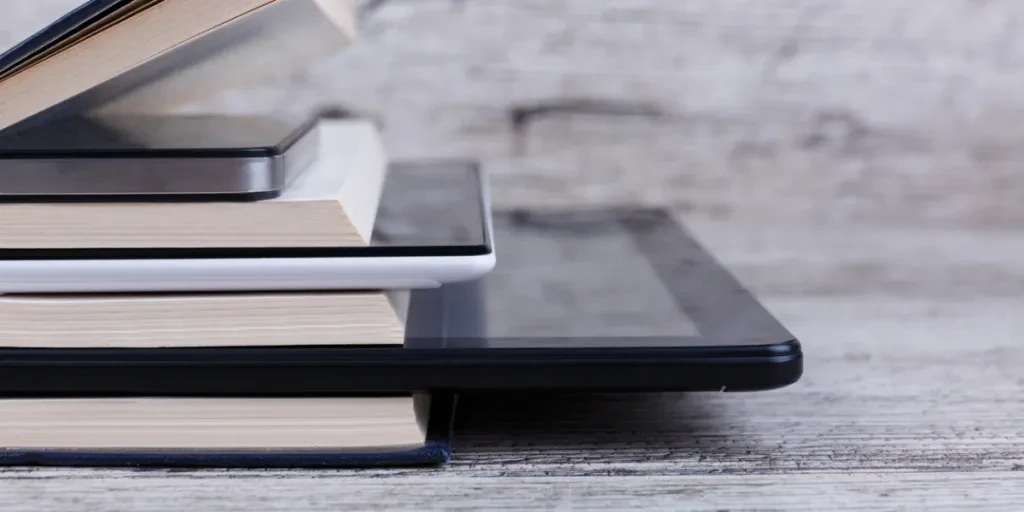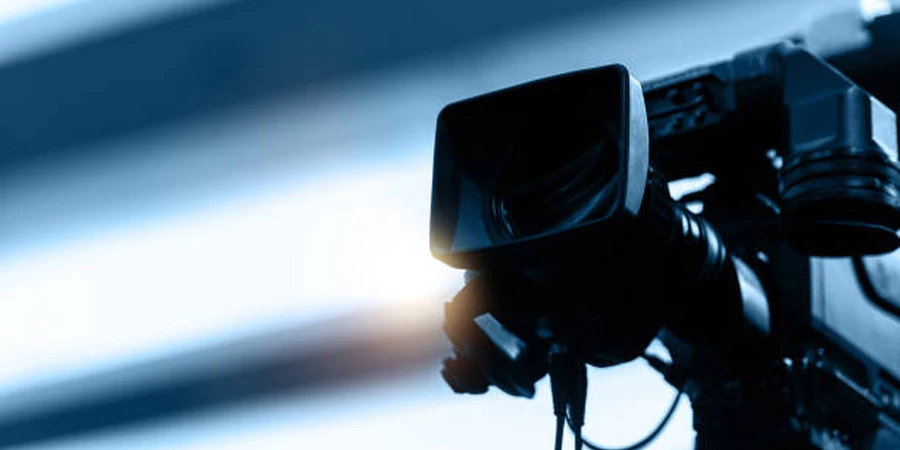While traditional paperback books aren’t going anywhere, technology is making reading more accessible and portable than ever. Two popular choices for digital reading are e-readers and tablets, each with unique features and advantages. Here, we will discuss the similarities and differences between e-readers and tablets to help you decide which is better.
Table of Contents
Market for e-readers and tablets
Understanding e-readers
Advantages of e-readers
Understanding tablets
Advantages of tablets
Which is better for reading?
Final thoughts
Market for e-readers and tablets
The e-reader market was valued at USD 9.62 billion in 2022 and is expected to reach USD 16.69 billion by 2030, growing at a compound annual growth rate (CAGR) of 7.13% between 2023 and 2030.
There are two major segments in the e-reader market: e-ink and LCD. Market analysts predict that e-ink e-readers will dominate. Therefore, all manufacturers of e-readers are directing their efforts toward developing devices with e-ink screens. This focus is driven by the advantages of e-ink, such as lower power consumption and enhanced text visibility, making it a preferred choice for creating cutting-edge e-reader devices.
Due to the versatility of tablets, the tablet market size was USD 42.55 billion in 2022, and the total revenue is expected to grow at a CAGR of 3.4% from 2023 to 2029, reaching nearly USD 53.78 billion.
Due to the pandemic, people started to study and work from home, so the demand for tablets increased rapidly. Remote employment, online schooling, and continuous stay-at-home activities contributed to a 19% increase in demand for large-screen mobile devices in 2022.
Based on the operating system, the tablet market is segmented into Android, iOS, and Windows. Android captured the largest market share, accounting for 44.91% in 2022. The iOS System segment is expected to grow at a CAGR of 3.21% over the forecast period.
Understanding e-readers
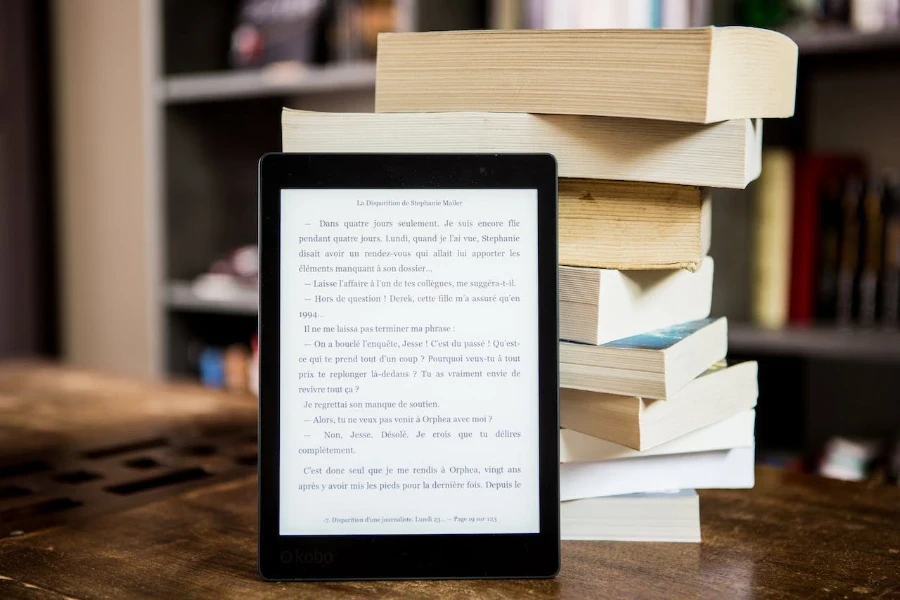
An e-reader, short for electronic reader or e-book reader, is a digital device designed specifically for reading digital versions of books and other written materials. E-readers aim to replicate the reading experience of traditional paper-based books while providing additional features and advantages associated with digital technology.
These devices typically feature electronic ink displays, which mimic the appearance of traditional paper and are known for their low power consumption. The absence of backlighting reduces eye strain, making them more comfortable for prolonged reading sessions.
Common e-reader brands include Amazon Kindle, Barnes & Noble Nook, Kobo, and others.
Advantages of e-readers

Since e-readers are specifically made for reading, there are many advantages and features.
E-ink technology
E-readers utilize e-ink displays, which reflect ambient light rather than emitting light like traditional LCD screens. This technology closely resembles the appearance of ink on paper, resulting in reduced glare and eye fatigue. Readers often find e-ink displays more comfortable, especially for reading in bright sunlight.
Battery life
One of the standout features of e-readers is their impressive battery life. Since e-ink displays only consume power when the screen is refreshed, e-readers can last for weeks on a single charge. This makes them ideal for avid readers who want to avoid frequent recharging.
Weight and portability
E-readers are generally lighter and more compact than tablets, making them easy to carry around. The slim design and minimalistic approach make e-readers convenient for those who prioritize portability.
Dedicated reading experience
E-readers are designed with the sole purpose of providing an immersive reading experience. The lack of distractions, such as notifications and other multimedia features, allows readers to focus solely on their books. Many e-readers also have features like adjustable font size, built-in dictionaries, and note-taking capabilities.
Understanding tablets
Conversely, tablets are multifunctional devices that offer a broader range of features beyond just reading. With vibrant color displays, touchscreens, and powerful processors, tablets can handle various tasks, including web browsing, gaming, streaming, and more.
Advantages of tablets
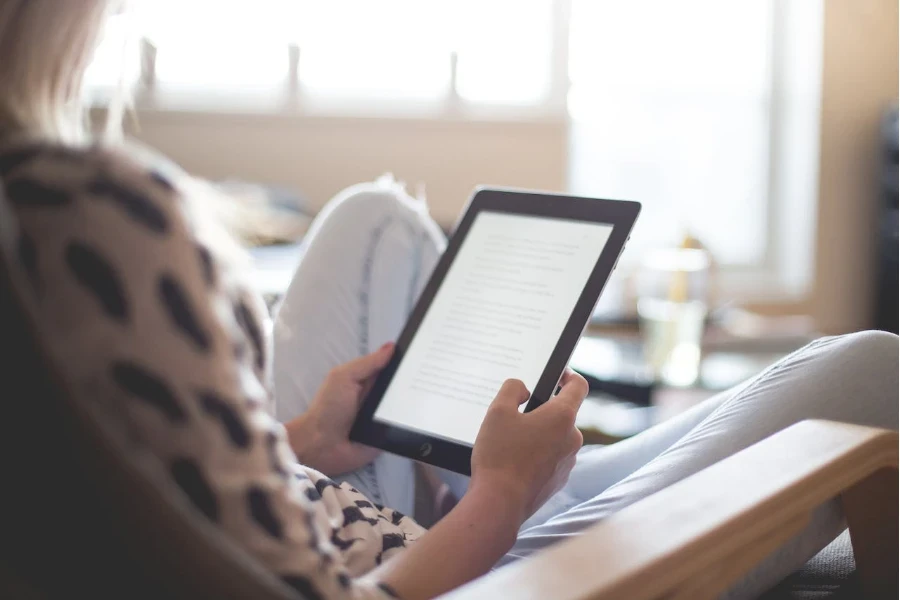
Multifunctionality
Tablets are versatile devices that go beyond just reading. With the ability to run various applications, including e-book apps, tablets can be a one-stop solution for entertainment, productivity, and communication. A tablet might be the better choice for those who want a device that can handle multiple tasks.
Colorful displays
Unlike e-readers, tablets come with full-color displays, making them suitable for graphic novels, magazines, and other content that relies on vibrant visuals. If your reading preferences extend beyond traditional text, a tablet provides a more visually engaging experience.
Backlit screens
Tablets typically have backlit screens, allowing users to read in low-light conditions without an external light source. While this feature can be convenient, it may contribute to eye strain during prolonged reading sessions.
Note: Many e-readers now also have the option to backlight the screen, specifically for reading in low-light conditions.
App compatibility
Tablets run on operating systems like iOS or Android, giving users access to a vast array of apps; this includes popular e-book apps but also social media, productivity tools, and entertainment apps.
A tablet might be the right choice for those who value a device that can do more than display books.
Which is better for reading?
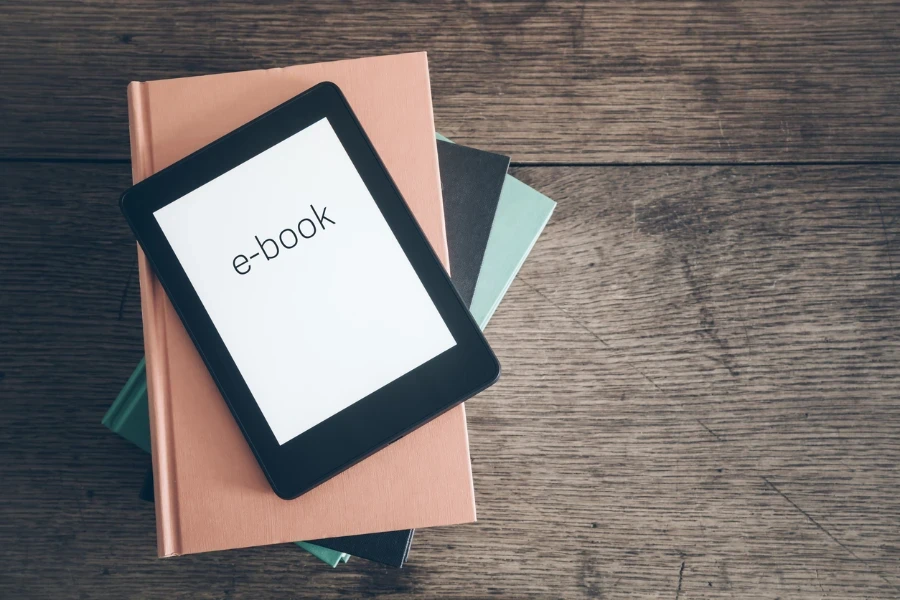
How can you decide which is better for reading? Here are a few things to consider when making the choice:
- Reading experience: The most critical factor in choosing between an e-reader and a tablet for reading is the experience itself. E-readers excel at providing a book-like feel with their e-ink displays, offering a distraction-free environment. While capable of displaying e-books, tablets may not deliver the same level of comfort due to their backlit screens and the potential for interruptions from notifications.
- Eye comfort: E-readers are often preferred for extended reading sessions because of their displays, which are easier on the eyes. The absence of backlight reduces eye strain, making e-readers suitable for those who prioritize eye comfort. Tablets may cause more eye fatigue during prolonged use.
- Battery life: The battery life of e-readers is a significant advantage over tablets. E-readers can last for weeks on a single charge, making them an excellent choice for readers who want a device that requires minimal charging. With their more power-hungry components, tablets need to be charged more frequently.
- Portability: E-readers are designed with portability in mind, offering a lightweight and compact form factor. Tablets are bulkier and heavier, which may be a consideration if portability is a top priority.
- Cost: E-readers are often more budget-friendly than tablets, as they are designed for a specific purpose and have fewer features. If your primary use is reading and you want an affordable option, an e-reader may be the more cost-effective choice.
Final thoughts
So, what’s the verdict? E-readers and tablets are both great devices, but e-readers are better for those dedicated to reading, while tablets are the go-to for those seeking a more versatile device.
That being said, as a business owner, you don’t have to choose between which devices to carry as both devices appeal to a wide variety of consumers and many choose to own both depending on their personal need. However, understanding the major differences between these devices and which appeals to which customers is essential to ensure you can best guide your customers to the device that suits their needs.
It’s worth noting that some users find a middle ground by owning an e-reader and a tablet, using each device for its strengths in different scenarios. As a business owner, you don’t necessarily have to choose between which devices to carry. Still, you should know which appeals to which customers and be able to guide them to the right choice.
